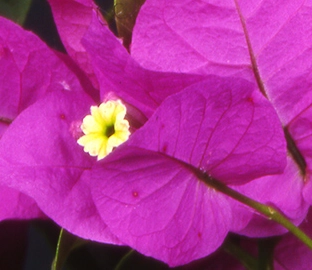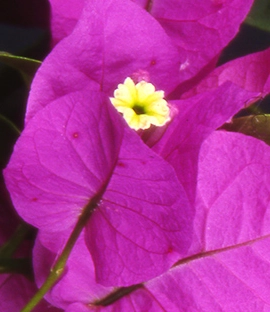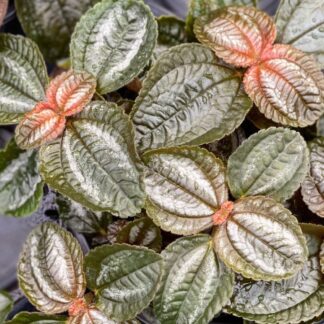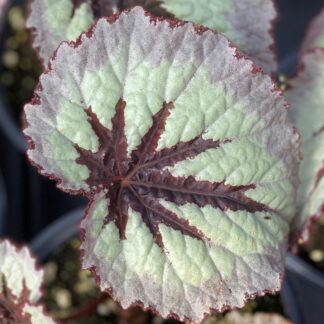Description
Bougainvillea ‘Elizabeth Angus’: A Beautiful Burst of Purple
Bougainvillea ‘Elizabeth Angus’ is a vibrant, eye-catching plant that brings intense purple color to any garden, patio, or landscape. Known for its rich, deep purple bracts (those are the leaf-like parts that look like flowers), this tropical plant adds a splash of color that lasts for months. It’s a great choice if you want something bold, low-maintenance, and sun-loving.
In this guide, we’ll walk you through everything you need to know about ‘Elizabeth Angus’—what it looks like, where to grow it, and how to care for it. This version is designed to be very easy to read, using short sentences and clear steps. Let’s get started.
What Makes ‘Elizabeth Angus’ Special?
- Rich purple bracts: These bracts look like flowers and bloom nearly non-stop in warm weather.
- Fast-growing vine: Great for walls, fences, trellises, or containers.
- Drought-tolerant: Once established, it needs very little water.
- Low maintenance: Just a little pruning and feeding will keep it healthy.
- Long bloom season: Flowers from spring through fall—and longer in warm climates.
Where to Plant Bougainvillea ‘Elizabeth Angus’
This plant loves the sun. The more sun it gets, the more it blooms.
- Full sun is a must. At least 6 hours of direct sunlight each day.
- It grows best in USDA hardiness zones 9–11. In cooler areas, grow it in a container and bring it indoors during winter.
- Plant it near fences, pergolas, or trellises. It climbs and drapes beautifully.
- In containers, use a large pot with drainage holes.
How Big Does It Get?
‘Elizabeth Angus’ is a vigorous climber.
- Grows up to 20–30 feet long in warm climates.
- Can be kept smaller with regular pruning.
- In a pot, it stays more compact—usually around 5–8 feet.
Soil and Potting Mix
Good drainage is the key. Bougainvilleas hate soggy soil.
- Use a well-draining soil—sandy or loamy works best.
- If planting in a pot, use a cactus or succulent mix, or mix regular potting soil with perlite or sand.
- Never let the roots sit in water.
How to Water
Bougainvillea likes it dry between waterings.
- Water deeply, but only when the top 2–3 inches of soil are dry.
- During hot summers, water every 5–7 days.
- In cooler months or indoors, cut back—once every 10–14 days.
- Overwatering can lead to root rot and poor blooming.
Fertilizing for More Blooms
To keep those purple bracts coming, give your plant the nutrients it needs.
- Use a balanced fertilizer (like 10-10-10) every 4–6 weeks during the growing season.
- A bloom booster (high in phosphorus) can help increase flower production.
- In winter, stop fertilizing to let the plant rest.
Pruning and Shaping
Pruning keeps your Bougainvillea healthy and full of blooms.
- After each bloom cycle, trim back lightly to encourage more flowers.
- In early spring, do a hard prune to shape and remove dead or weak growth.
- Use gloves and sharp shears. Bougainvillea has thorns!
Training on Structures
‘Elizabeth Angus’ is perfect for covering structures. Here’s how to train it:
- Use soft ties to attach young vines to a trellis or fence.
- As it grows, gently guide new shoots in the direction you want.
- Once it grabs hold, it climbs on its own.
Growing in Containers
You don’t need a big yard—Bougainvillea grows great in pots!
- Use a sturdy container (at least 18 inches wide).
- Choose a lightweight potting mix with good drainage.
- Place in a sunny spot, like a patio, balcony, or poolside.
- In cold climates, bring it inside before frost. Place it in a sunny window or a sunroom.
Winter Care Tips
Bougainvillea is not frost-hardy, so it needs protection in cold areas.
- If growing in the ground in zone 8 or lower, dig it up and place it in a pot to bring indoors.
- Indoors, keep it dry and cool (around 50–60°F). It may drop leaves—that’s okay.
- Water just enough to prevent the soil from going bone dry.
Common Problems (and Simple Fixes)
Here are a few issues you might run into, along with how to solve them:
- No blooms? → Likely too much water, not enough sun, or too much nitrogen fertilizer.
- Yellow leaves? → Could be overwatering or poor drainage.
- Pests (aphids, caterpillars)? → Use insecticidal soap or neem oil.
- Dropping leaves? → Often due to stress, such as moving the plant or a sudden cold snap.
Fun Ways to Use ‘Elizabeth Angus’
- Let it climb a trellis behind a bench or patio.
- Grow it in a large container for a splash of color on the porch.
- Train it as a bonsai for something really unique.
- Mix it with other Bougainvillea varieties for a multi-color display.
Why You’ll Love Bougainvillea ‘Elizabeth Angus’
If you’re looking for a plant that stands out, this is it. The purple bracts are bold, rich, and tropical-looking. Once established, it’s easy to grow, low on water needs, and long-lasting in bloom. You get beauty without a lot of fuss.
It’s the perfect choice for:
- Homeowners who want low-maintenance color
- Gardeners in hot, sunny places
- Container gardeners who want a tropical flair
- Anyone who loves bold, dramatic flowers
Final Tips for Success
- Give it sunshine. This is the #1 rule for happy Bougainvillea.
- Don’t overwater. Less is more.
- Prune regularly. It will bloom more and grow better.
- Fertilize wisely. Not too much, and use a bloom-boosting type.
- Protect it from frost. Bring it inside or cover it during cold snaps.
Bougainvillea ‘Elizabeth Angus’ is a stunning purple powerhouse that turns any garden into a tropical paradise. With just a little care and the right conditions, this plant will reward you with a season-long show of color. Whether you’re growing it on a fence, in a pot, or across a sunny wall, it’s bound to become a favorite.
Now’s the perfect time to plant yours and start enjoying those incredible purple blooms!







